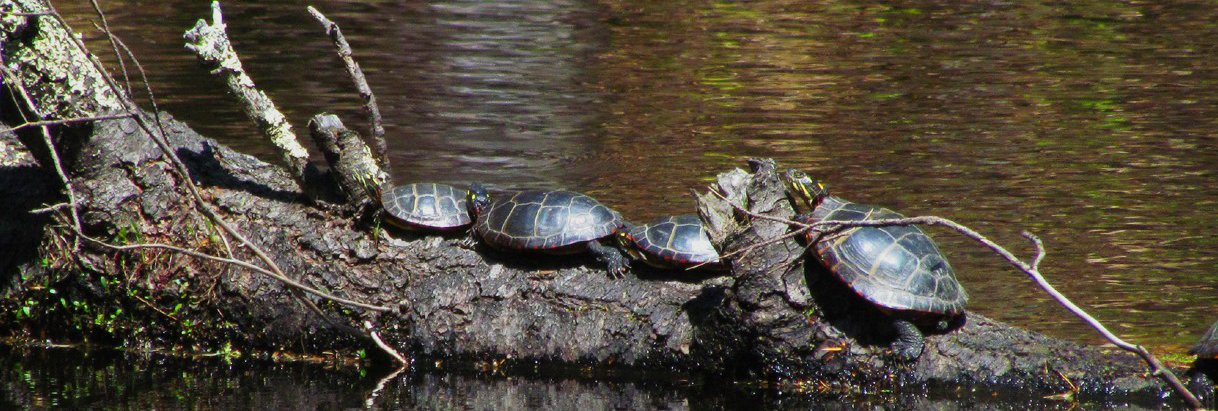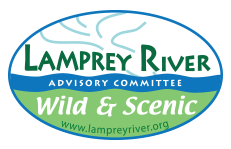The Lamprey River and its surrounding area are predominantly forested and undeveloped. As such, the river still meets many of the requirements of animals that have disappeared from many other, more developed areas. The presence of these animals was a key factor in the river’s nomination to the National Park Service’s Wild and Scenic Rivers program. As the Lamprey’s human population continues to grow and more land is developed, threatened species will need to be monitored closely to make sure they continue to be a presence. Anyone who sees any of the species listed here is asked to contact the NH Dept. of Fish and Game.
The species described on this page are listed with the NH Dept. of Fish and Game and have been documented in and along the Lamprey River. If you see any of these, please submit a sighting form to the Reptile and Amphibian Reporting Program. Every report matters! The more reports received, the better the chances are that that site can be protected.
bald eagle

They can often be seen during migrations and during winter, when they hunt on Great Bay. Bald eagles are opportunistic feeders, sometimes hunting fish or water birds, but also taking advantage of the carcasses of large animals, such as deer. If an eagle is regularly observed roosting, landowners should report the bird to the NH Dept. of Environmental Services and minimize activity or physical disturbance around the tree. Bald eagles are listed as endangered in New Hampshire and threatened in the United States. This species is recovering from effects from widespread use of pesticides in the past.
banded sunfish

black racer

bridle shiner

brook floater mussel

peregrine falcon

pied-billed grebe

This species inhabits a range of wetlands, especially those with dense stands of emergent and submerged vegetation. It needs open water for foraging and take-off prior to flight. The nests are located in vegetation just above the surface of water, often in the impoundments of beaver or man-made dams. If water levels rise or fall significantly during the nesting season, the nests can fail due to flooding or stranding. In addition, the loss and degradation of wetlands in most of New England make the species particularly vulnerable to decline. The pied-billed grebe is listed as endangered in New Hampshire.
red-fin pickerel

sedge wren
The sedge wren is a small, brown songbird with dark brown vertical streaking starting at the head and running down the back. It has a pale eye stripe running from its bill and across its eyes. The wings, rump, and tail are brown with dark horizontal bars. The breast is pale with buff colored margins. The bill is short, thin, and curved slightly downward. This species uses high sedges or slender grasses found in fresh water and salt water marshes and pond edges. It also prefers to have shrub cover available. The sedge wren is at the edge of its range in New Hampshire and has never been common here. This bird species has experienced a severe decline in population throughout much of the Northeast, largely due to the extensive draining and filling of wetlands, ditching of salt marshes, and the resultant spread of common reed, Phragmites australis, a non-native, very tall and dense grass that is of little value to native wildlife. The sedge wren is listed as endangered in New Hampshire and much of New England.
spotted turtle

wood turtle

timber rattlesnake


